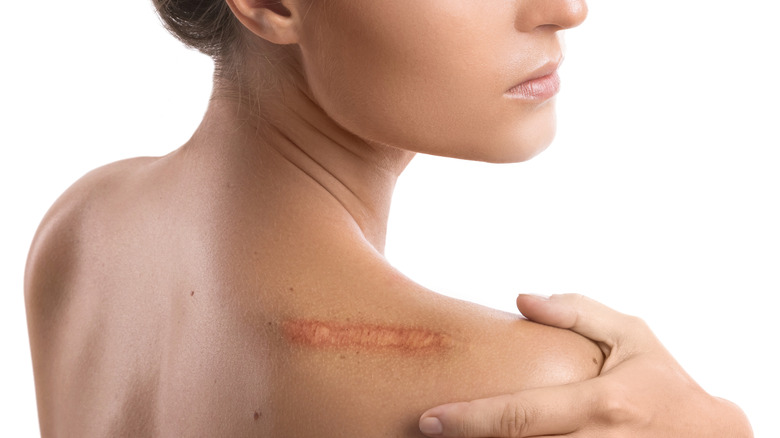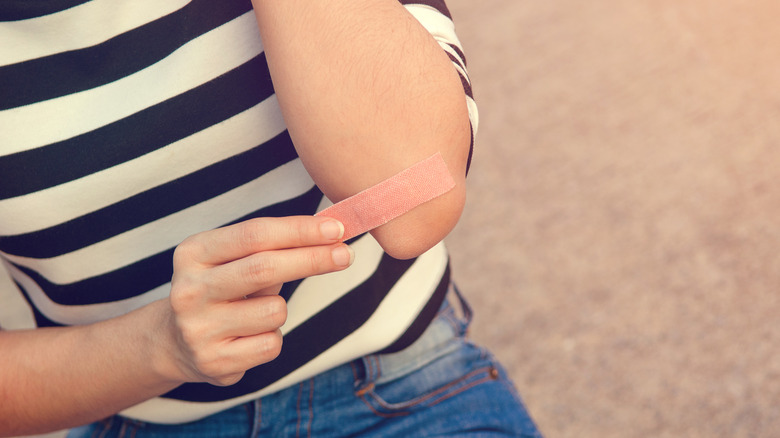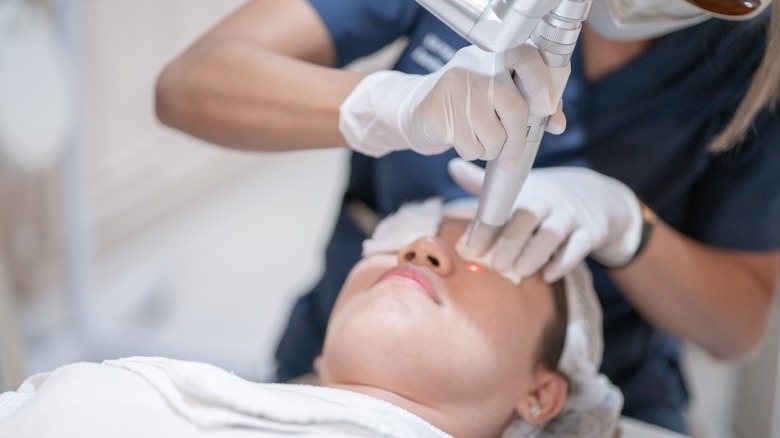How To Care For A Wound To Minimize Scarring
When your skin is injured, your body works to repair it by producing collagen (via USA Today). During this healing process, sometimes a scar can form. Whether or not your skin scars depends on a number of different factors, including the size and severity of the wound, as well as the location. In addition, your age, genes, ethnicity, and overall health can all contribute to the appearance of a scar.
Generally speaking, however, the main difference between a scar and regular healed tissue is the alignment of it. As it turns out, the collagen that appears when a scar is formed is thicker, discolored, and less uniform than the tissue it replaces. According to the Cleveland Clinic, there are three different types of scars that can form on your skin: atrophic, hypertrophic, and keloid scars. Atrophic scars are indented scars from acne or chickenpox that form when the skin is unable to restore enough tissue, while hypertrophic scars are thick and raised and appear in the exact place of the original injury. Keloid scars, on the other hand, are raised scars that lengthen beyond the bounds of the injury.
TIps to prevent scars
Fortunately, there are a few things you can do to help prevent your skin from scarring. Aside from not getting injured in the first place, the best way to minimize scarring is to clean your wound and treat it right away (via Everyday Health). Cuts that are deep or spread apart will likely require stitches or sutures by a doctor or health care professional. The sooner this is done, the better.
It's also important to keep your wound moist while it's healing. You can accomplish this by applying petroleum jelly to your wound and covering it with a bandage. Another way to help prevent scarring is to let your wound heal naturally. This means refraining from picking any scabs that form and steering clear of any harsh products, like hydrogen peroxide, which can cause irritation and slow down the healing process. Massaging your wound can also help prevent a visible scar from appearing.
How to get rid of scars
If you already have a scar on your skin, however, there are a few dermatologist-recommended treatments that can help reduce the appearance of scarring. According to experts at Healthline, one cosmetic procedure you can undergo to lessen the appearance of scarring is known as dermabrasion. As it turns out, dermabrasion is an exfoliating technique that involves using an instrument to resurface your skin by removing the outermost layer of your skin. Most people who get dermabrasion see a 50% reduction in the appearance of their scars.
Another treatment option is laser therapy, which uses focused light to resurface your skin. While it can't completely remove scarring, laser therapy can improve its overall appearance. In addition, cryotherapy may be helpful for people with keloid and hypertrophic scars. During cryotherapy treatment, a dermatologist will use a needle to freeze your scar with nitrogen vapor. People with acne scars, however, may want to try chemical peels, which involve using a chemical solution to remove the top layer of skin on your face.



